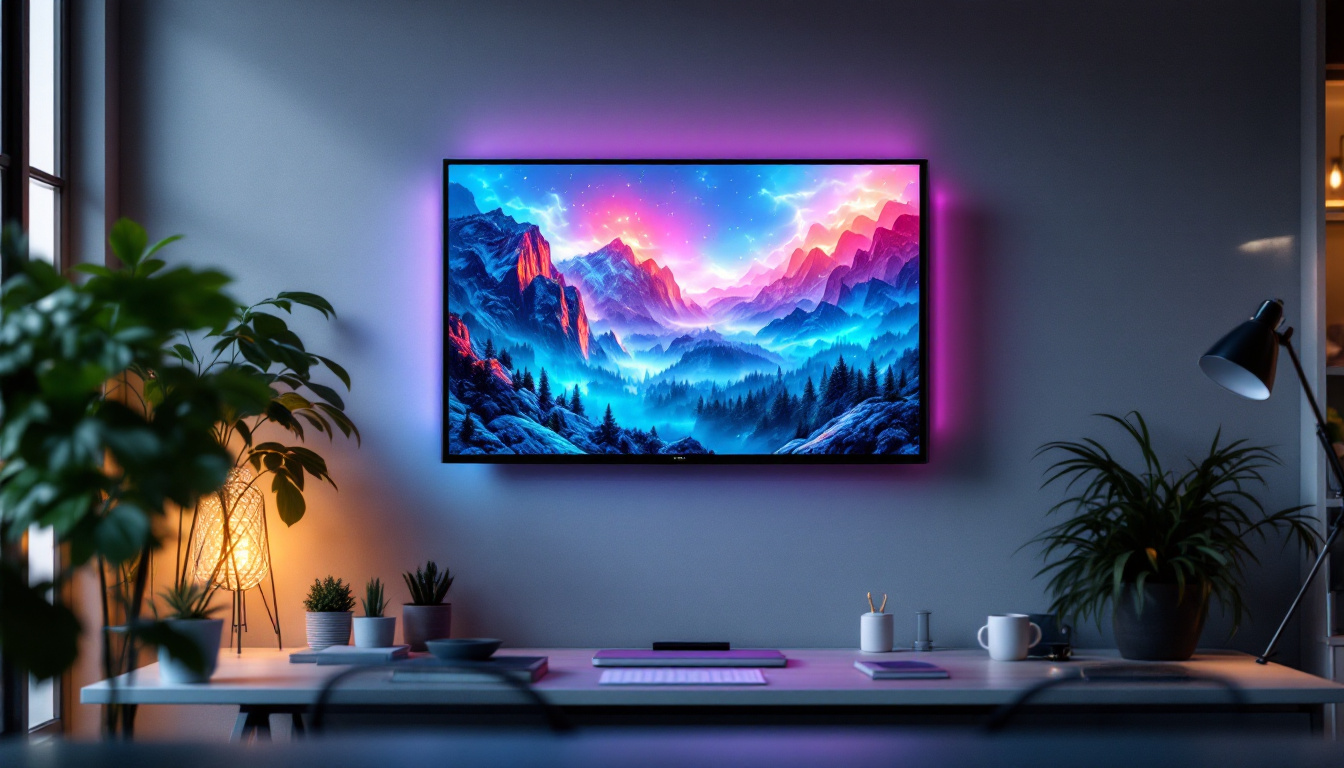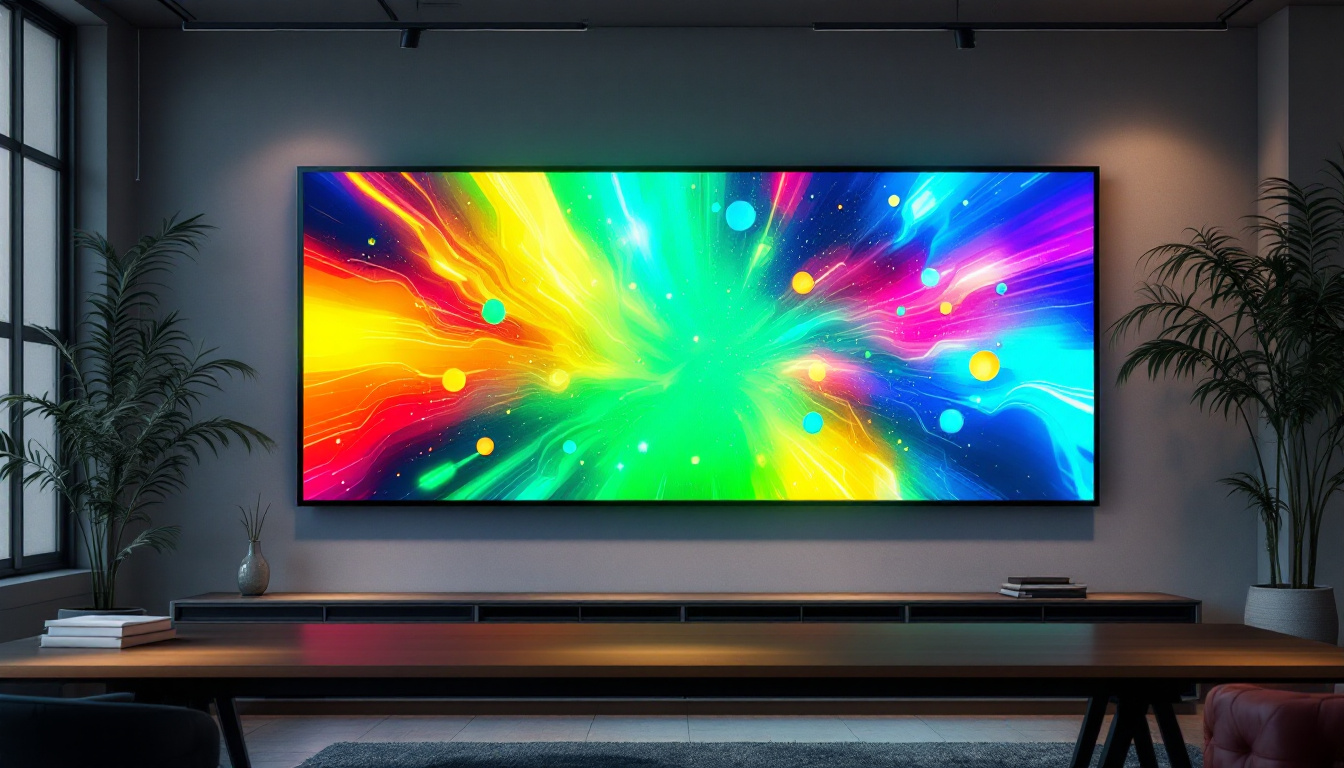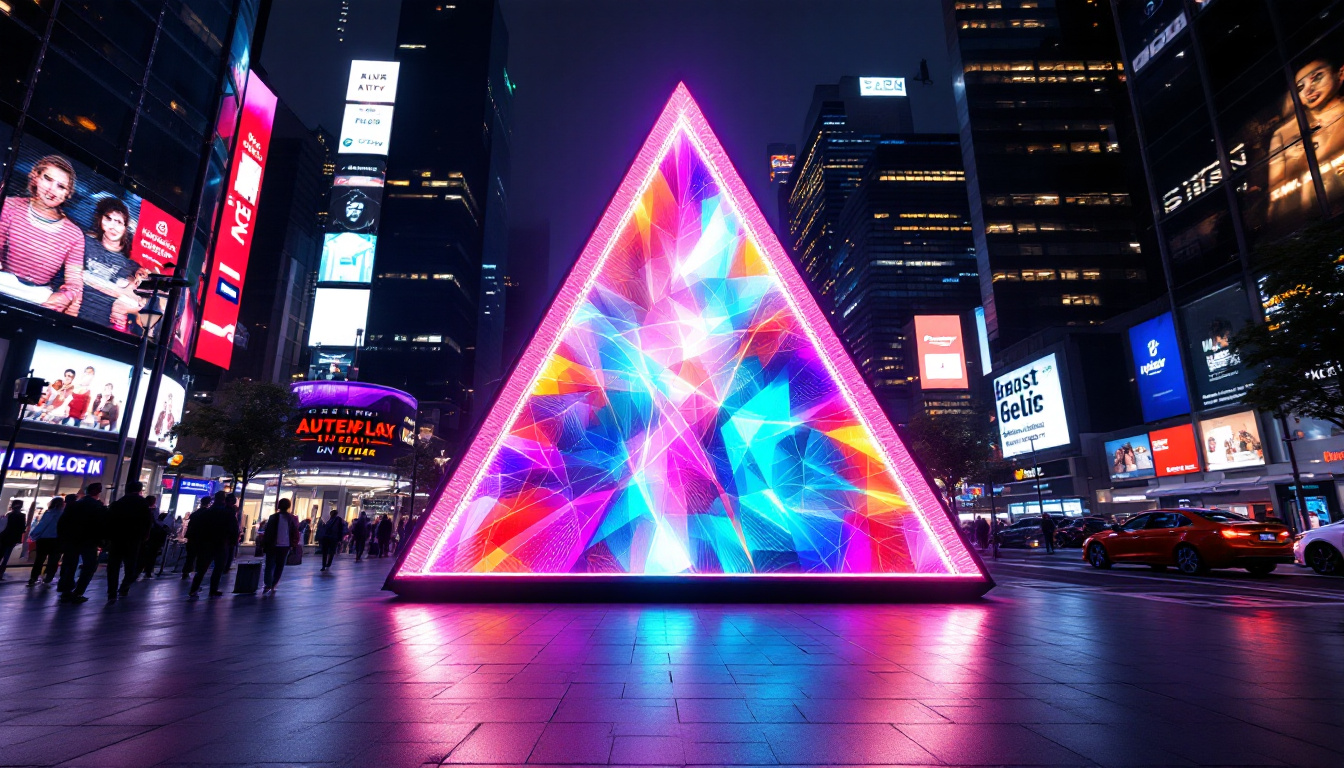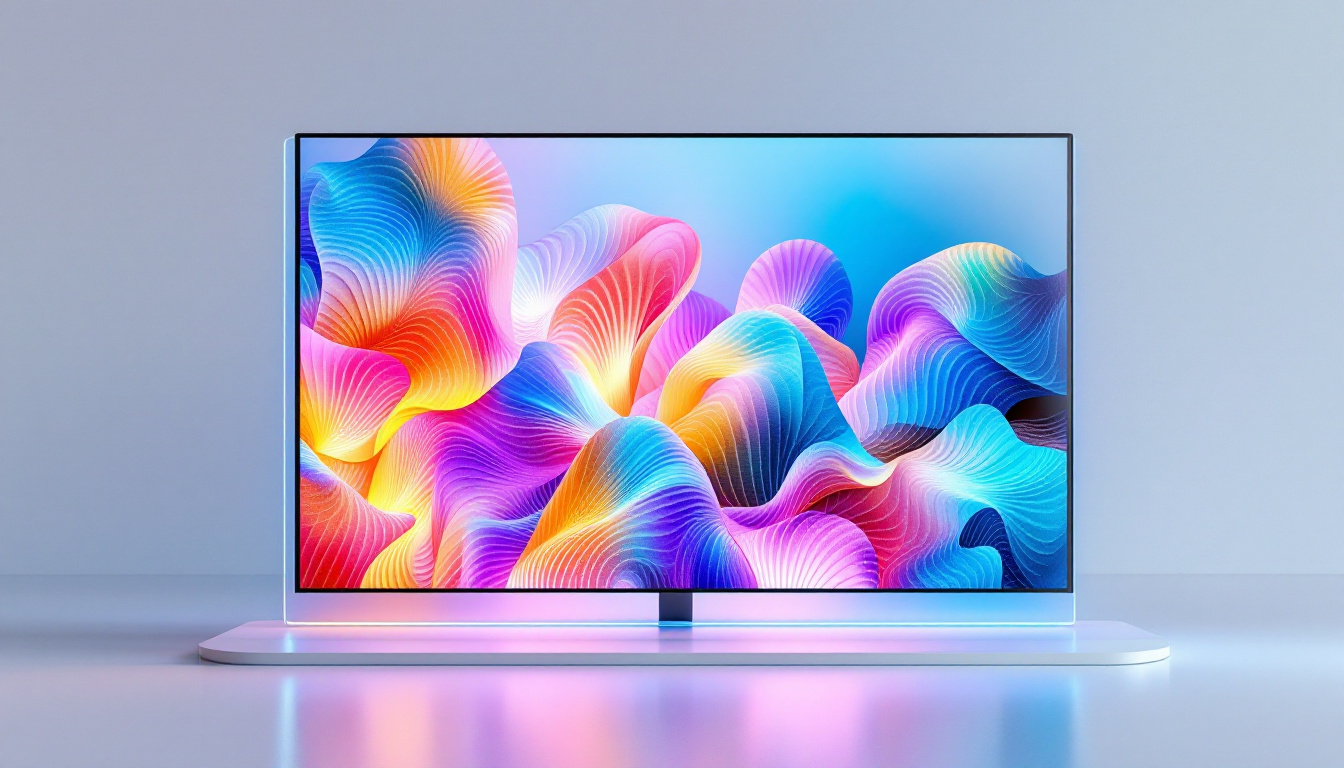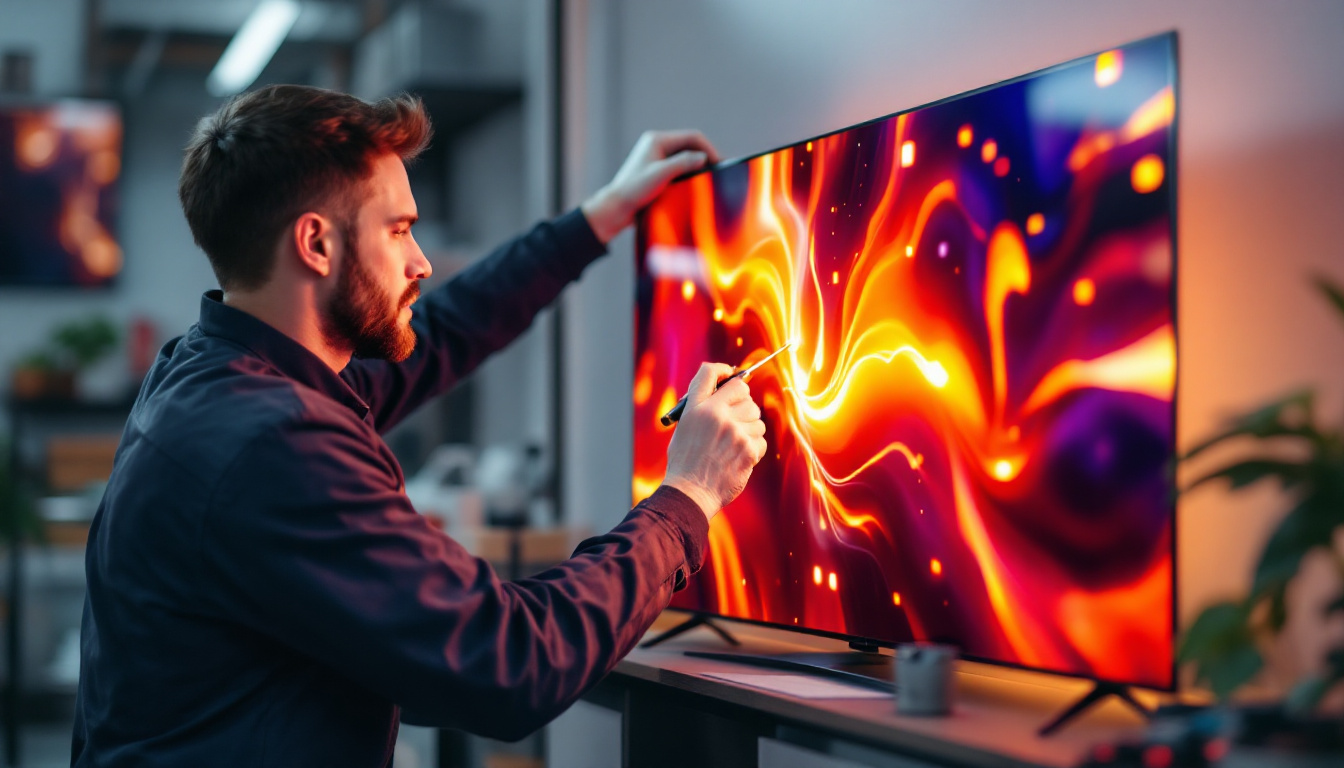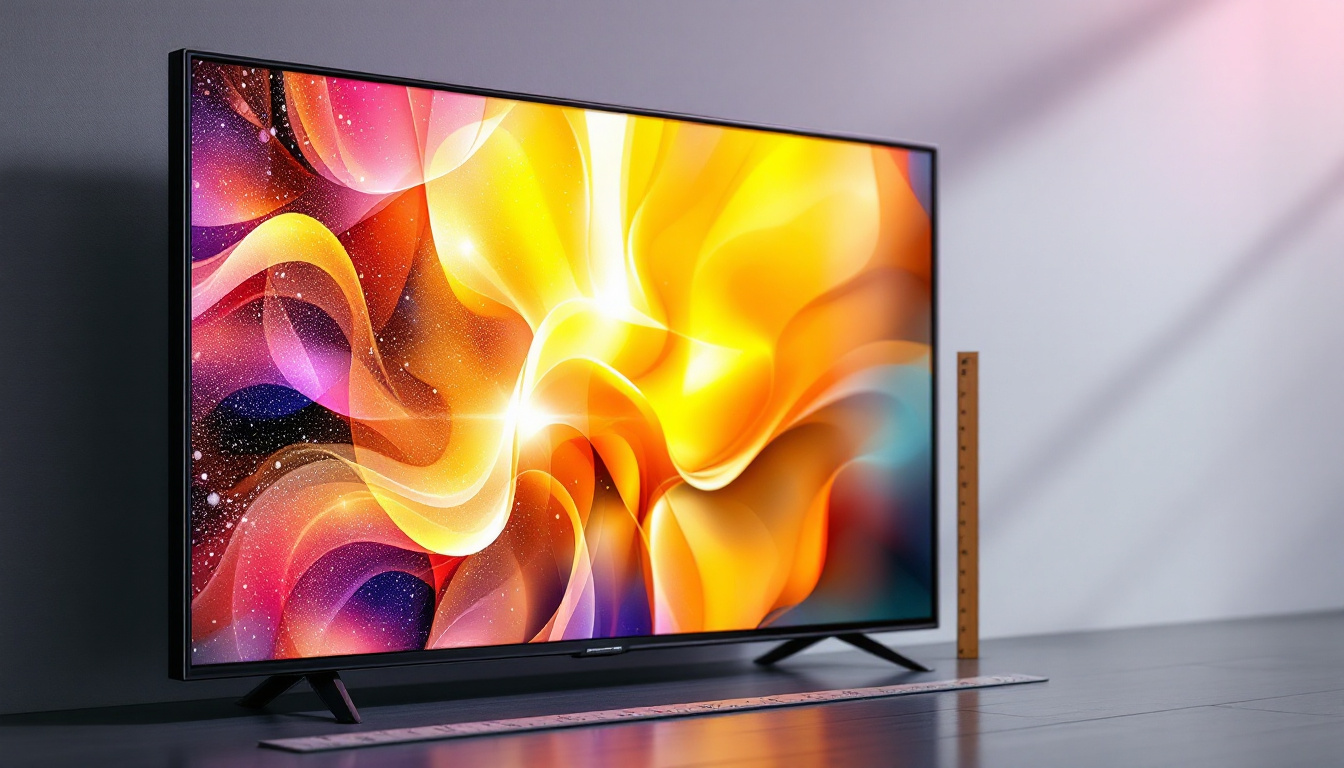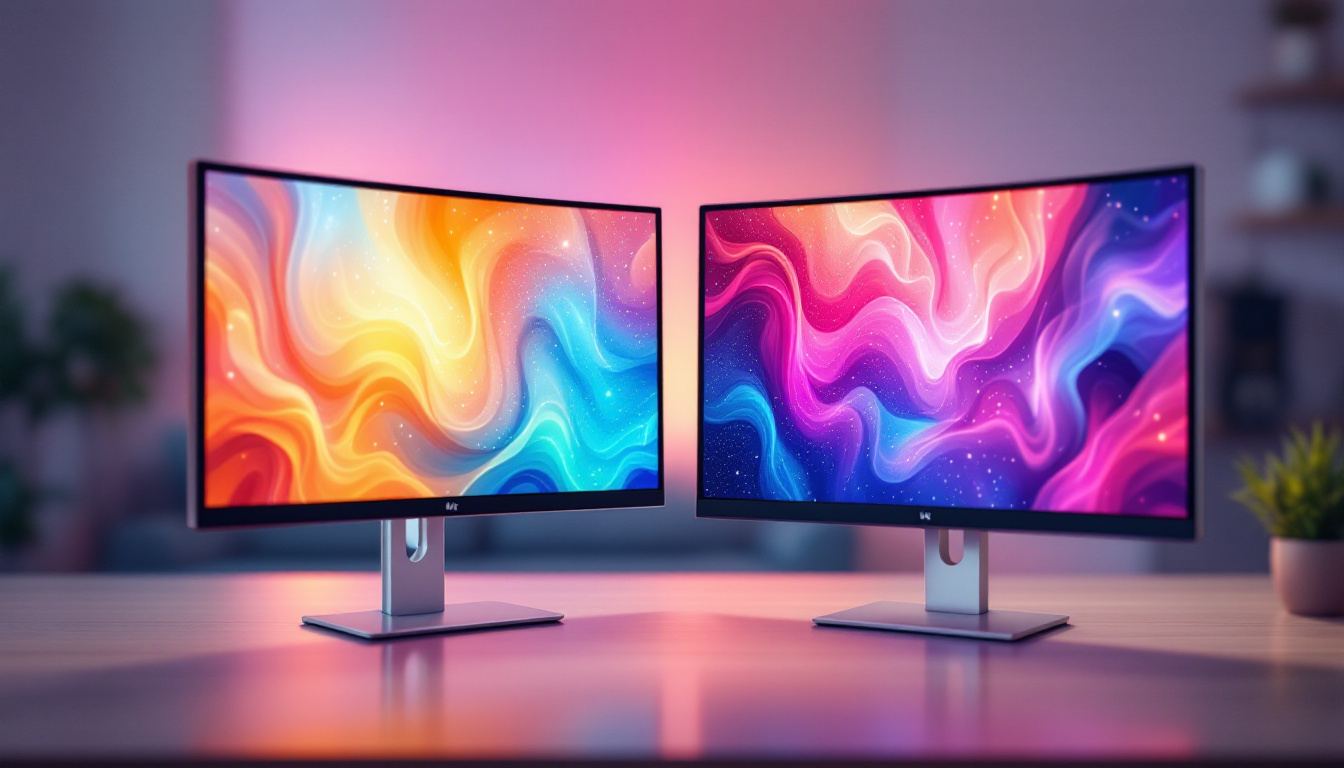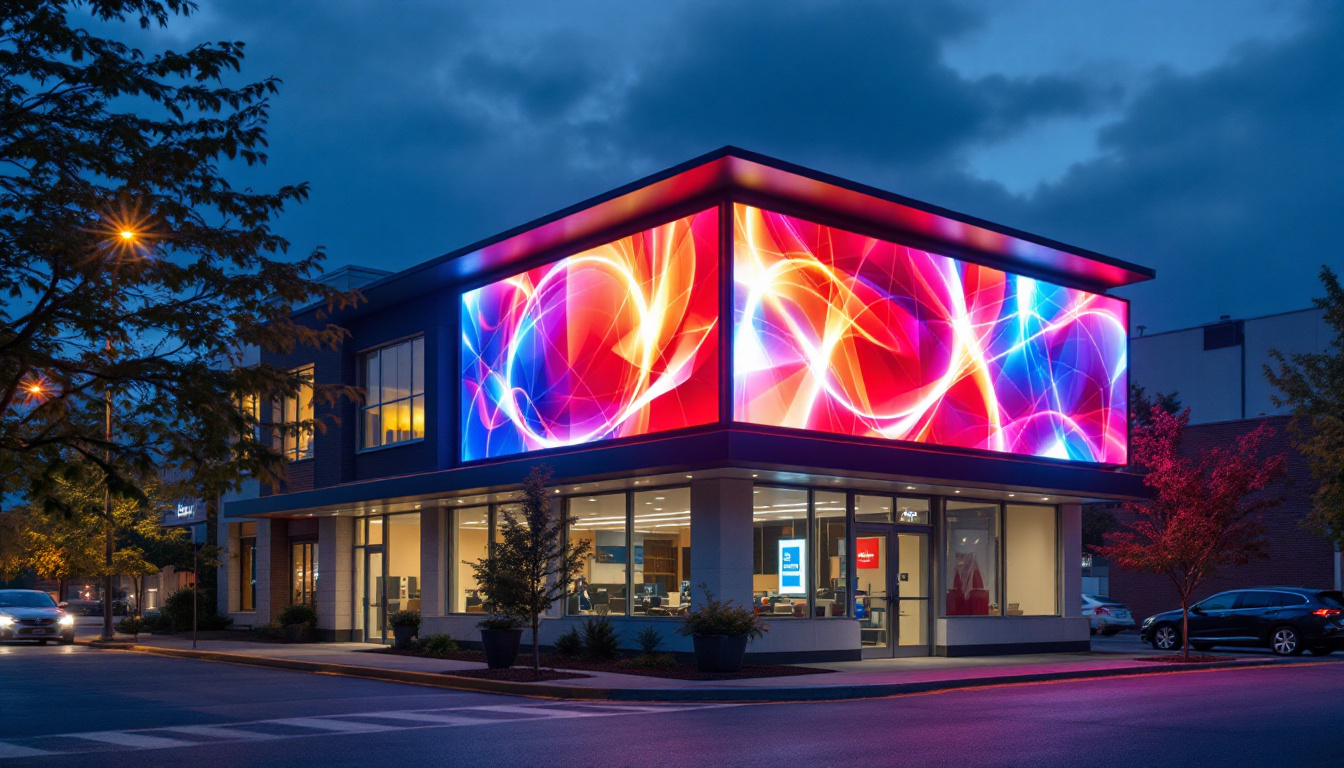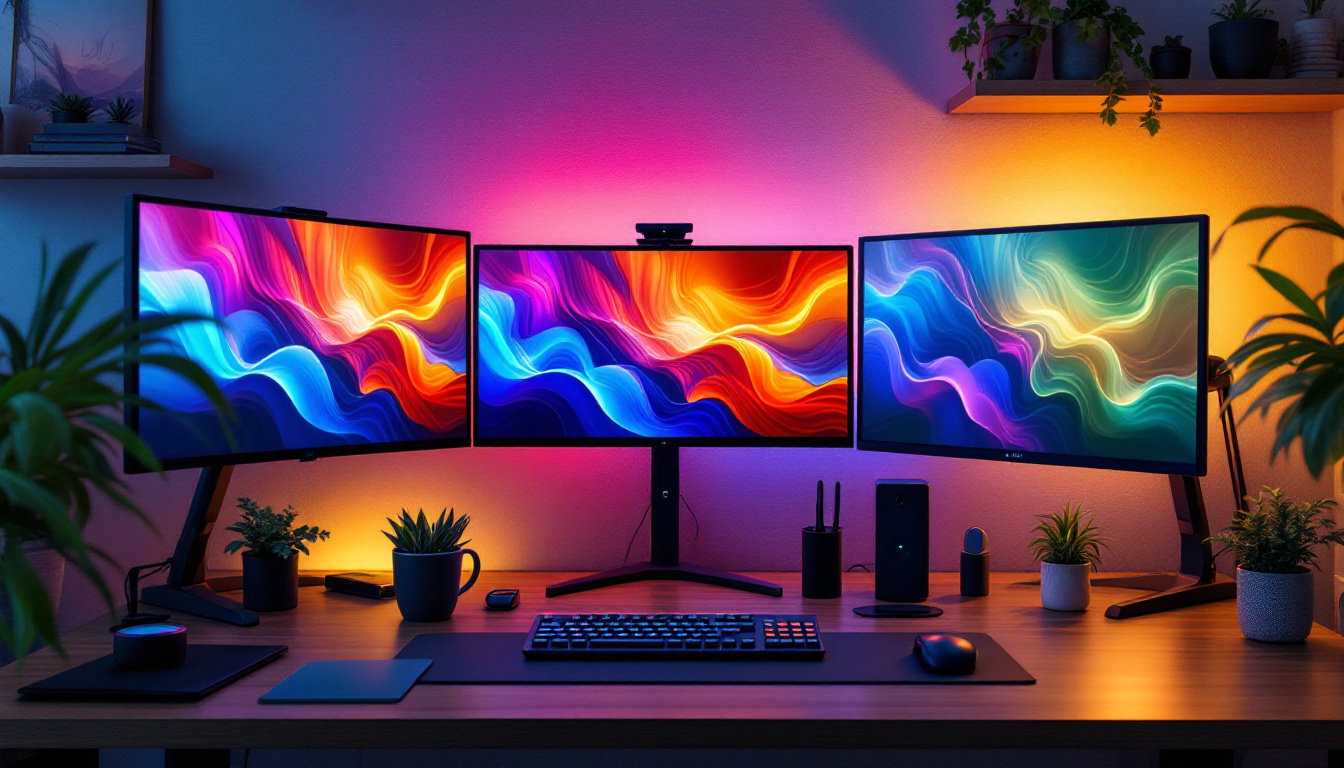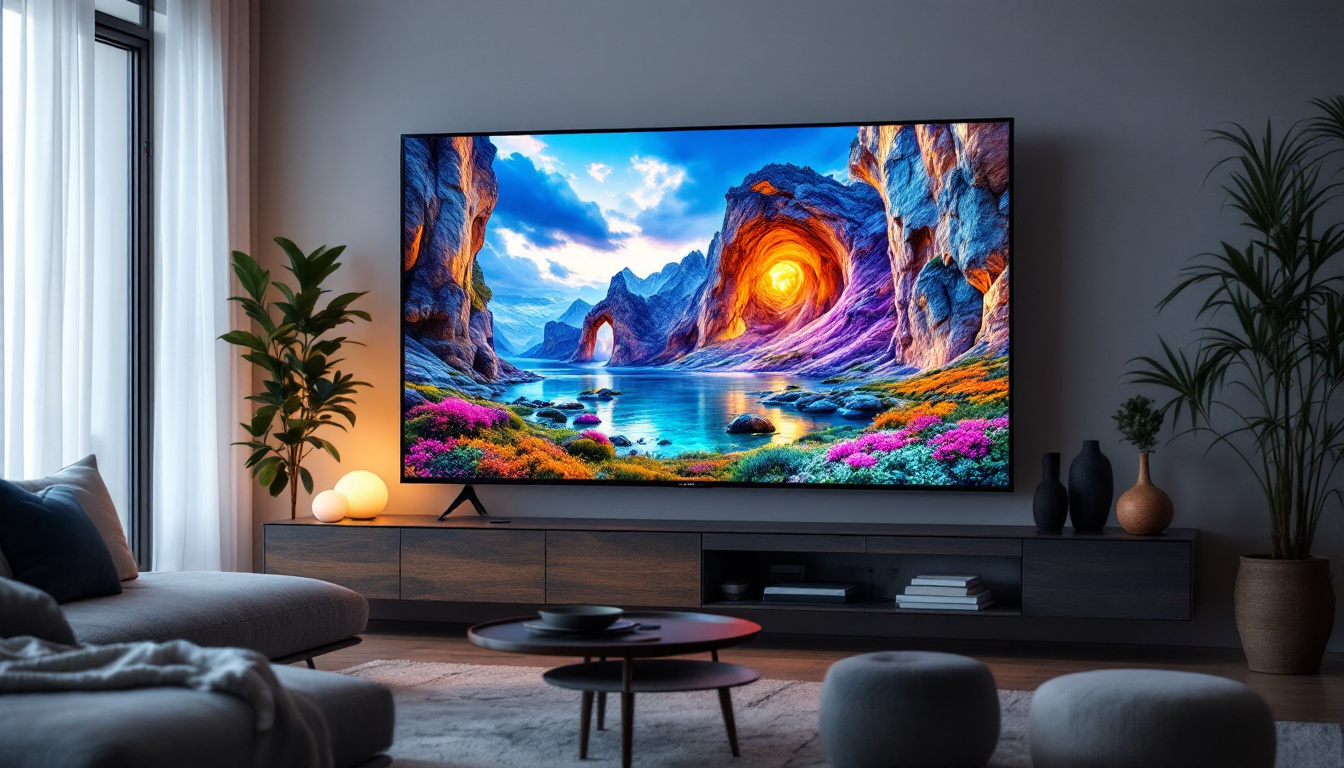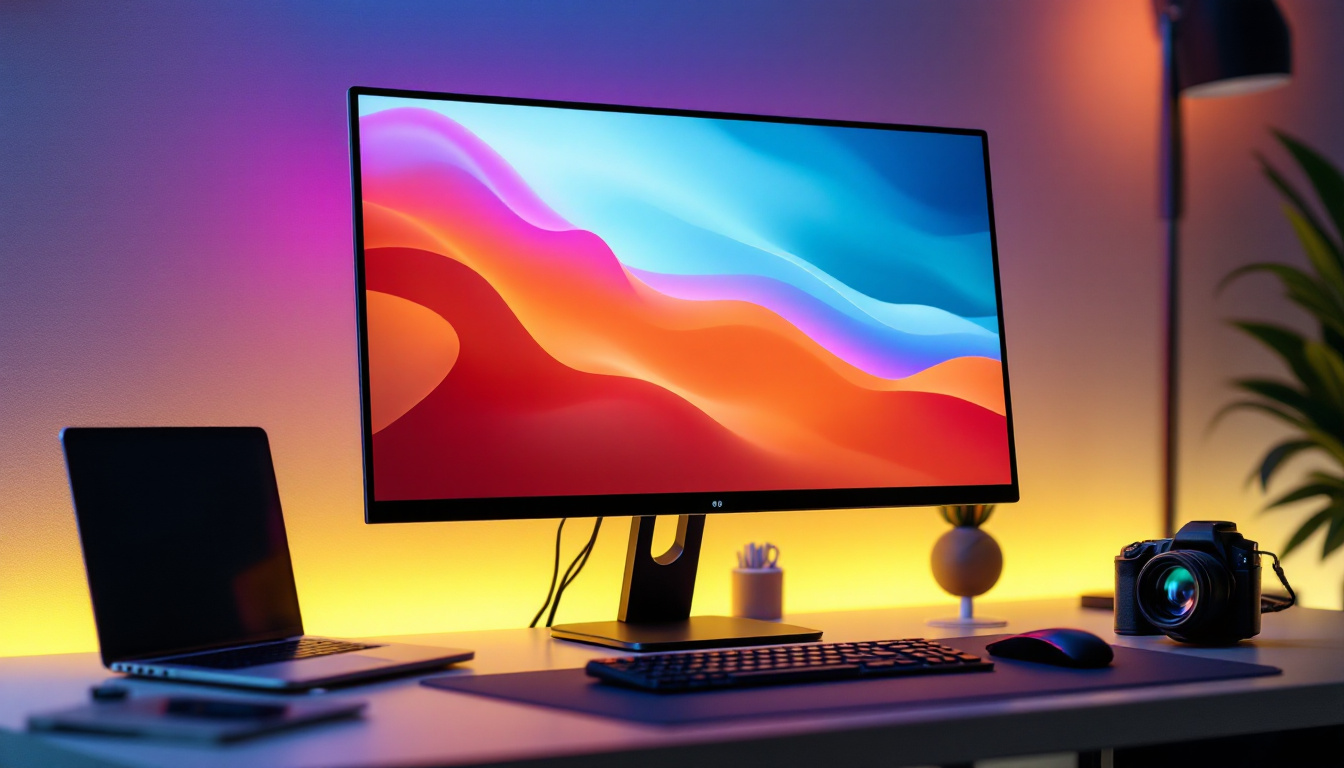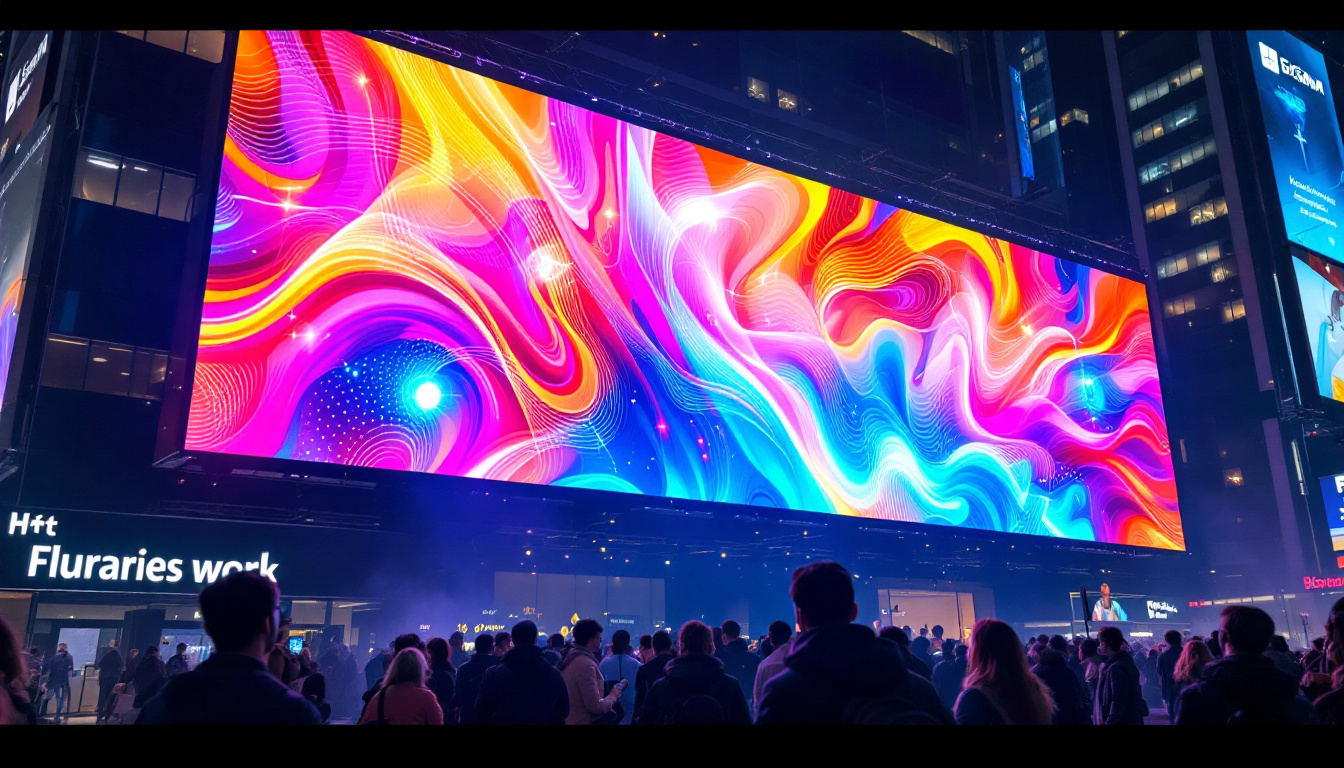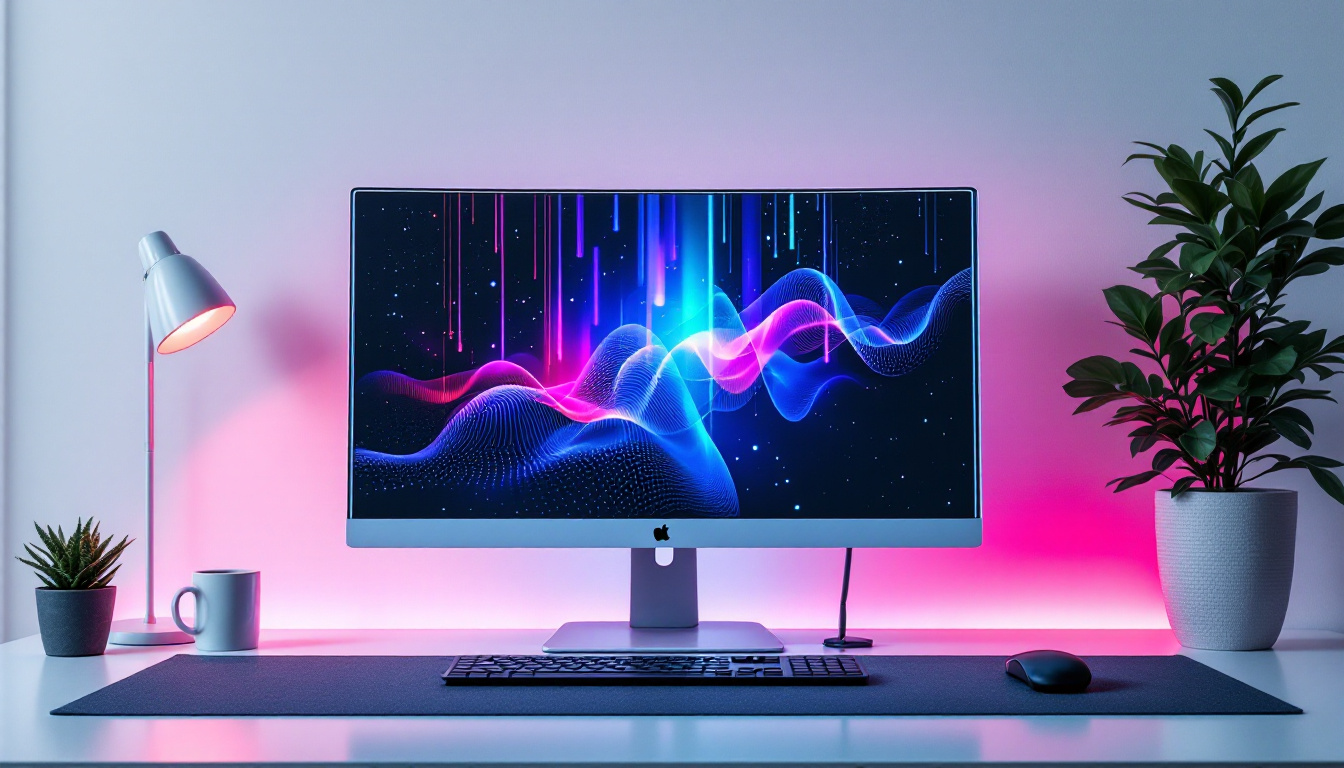In recent years, wall-mounted monitors have become increasingly popular in both residential and commercial settings. These sleek displays not only save space but also enhance the aesthetic appeal of any room. Among the various types of displays available, LED technology has emerged as a leading choice for wall-mounted monitors. This article delves into the intricacies of LED displays, their advantages, and key considerations for selecting the right wall-mounted monitor for your needs.
Understanding LED Technology
Light Emitting Diode (LED) technology has revolutionized the way we view images and videos. Unlike traditional LCD displays that rely on backlighting, LED monitors use an array of tiny diodes to produce light. This results in brighter images, better color accuracy, and improved energy efficiency.
The Basics of LED Displays
LED displays can be categorized into two main types: direct-lit and edge-lit. Direct-lit LED monitors have a grid of LEDs behind the screen, providing uniform brightness across the entire display. In contrast, edge-lit monitors feature LEDs along the edges, which can sometimes lead to uneven lighting but allows for thinner designs.
Another important aspect of LED technology is the color reproduction capabilities. LED displays can achieve a wider color gamut than traditional displays, making them ideal for applications where color accuracy is crucial, such as graphic design or video editing. This enhanced color performance is often complemented by technologies like HDR (High Dynamic Range), which further enriches the viewing experience by allowing for deeper blacks and brighter whites, thus creating a more lifelike image.
Benefits of LED Displays
One of the primary advantages of LED displays is their energy efficiency. LED technology consumes significantly less power compared to older display technologies, which can lead to substantial savings on electricity bills over time. Additionally, LED monitors have a longer lifespan, often lasting up to 50,000 hours or more, which reduces the frequency of replacements. This longevity not only benefits consumers but also contributes to a lower environmental impact, as fewer devices end up in landfills.
Moreover, LED displays are known for their superior contrast ratios and brightness levels. This means that images appear sharper and more vibrant, even in well-lit environments. Whether used for presentations, gaming, or streaming, the quality of an LED display can greatly enhance the viewing experience. Furthermore, advancements in LED technology have led to the development of OLED (Organic LED) displays, which offer even greater contrast and color depth by allowing individual pixels to emit light independently. This innovation has opened new avenues for immersive viewing experiences, particularly in high-definition and 4K content, where every detail matters.
Choosing the Right Wall Mounted Monitor
When selecting a wall-mounted monitor, several factors should be considered to ensure that the chosen display meets your specific needs. From size and resolution to connectivity options, each aspect plays a crucial role in the overall performance and usability of the monitor.
Size and Resolution
The size of the monitor is one of the first considerations to make. Wall-mounted monitors come in various sizes, typically ranging from 24 inches to over 80 inches. The size you choose should depend on the space available and the distance from which the monitor will be viewed. A larger monitor may be suitable for a spacious living room, while a smaller screen may be more appropriate for a home office.
Resolution is another critical factor. Common resolutions include Full HD (1920×1080), 4K (3840×2160), and even 8K (7680×4320). Higher resolutions provide more detail and clarity, making them ideal for tasks that require precision, such as graphic design or video editing. However, it’s essential to balance resolution with the size of the monitor; a 4K display on a small screen may not provide a noticeable difference compared to a Full HD display. Furthermore, consider the pixel density, as higher pixel density can enhance the viewing experience, especially for close-up tasks.
Connectivity Options
Modern wall-mounted monitors come equipped with various connectivity options, which can greatly influence their versatility. HDMI, DisplayPort, and USB-C are common inputs that allow users to connect a range of devices, from laptops to gaming consoles.
Additionally, some monitors offer built-in wireless connectivity, enabling users to stream content directly from their smartphones or tablets without the need for cables. This feature can be particularly beneficial in a home environment, where convenience and ease of use are paramount. Furthermore, consider the inclusion of smart features, such as integrated apps for streaming services, which can eliminate the need for additional devices and simplify your entertainment setup. The ability to control the monitor via voice commands or mobile apps can also enhance the user experience, making it easier to navigate through content and settings.
Another important aspect of connectivity is the availability of multiple ports, which can be crucial for users who need to switch between devices frequently. Monitors with multiple HDMI ports, USB hubs, and even legacy connections like VGA can provide flexibility for various setups, whether for gaming, professional work, or multimedia presentations. Additionally, some monitors come with built-in speakers or soundbars, which can enhance audio quality without the need for external speakers, making them a great choice for compact spaces.
Installation Considerations
Installing a wall-mounted monitor requires careful planning and execution. Proper installation not only ensures the safety of the monitor but also enhances the viewing experience. Here are some key considerations to keep in mind during the installation process.
Wall Mount Types
There are several types of wall mounts available, each designed for different needs. Fixed mounts keep the monitor in a stationary position, while tilting mounts allow for slight adjustments to reduce glare. Full-motion mounts provide the greatest flexibility, enabling users to swivel and tilt the monitor for optimal viewing angles.
Choosing the right wall mount depends on the monitor’s size and weight, as well as the room’s layout. It’s essential to select a mount that can support the monitor securely to prevent accidents and damage.
Height and Viewing Angle
When mounting a monitor, the height at which it is installed plays a crucial role in the viewing experience. Ideally, the center of the screen should be at eye level when seated. This positioning reduces neck strain and enhances comfort during prolonged use.
Additionally, considering the viewing angle is vital. If multiple seating arrangements are present in the room, a full-motion mount may be beneficial to accommodate different perspectives. Ensuring that the monitor is easily adjustable can enhance usability for everyone in the space.
Applications of Wall Mounted Monitors
Wall-mounted monitors are versatile and can be utilized in various settings, from homes to businesses. Understanding the different applications can help in selecting the right monitor for specific needs.
Home Entertainment
In a home setting, wall-mounted monitors serve as the centerpiece for entertainment systems. With the rise of streaming services, having a high-quality display enhances the viewing experience for movies, shows, and gaming. A large LED monitor can transform a living room into a mini-theater, providing immersive visuals and sound.
Moreover, wall-mounted monitors can also serve as digital art displays. With the right software, users can showcase a rotating gallery of images, adding a dynamic element to home decor.
Business and Commercial Use
In commercial environments, wall-mounted monitors are often used for presentations, advertisements, and information displays. Retailers utilize large LED screens to attract customers and showcase products, while conference rooms benefit from high-resolution monitors for effective presentations.
Additionally, wall-mounted monitors are increasingly used in educational settings. Classrooms equipped with LED displays can facilitate interactive learning, allowing teachers to present information in engaging ways.
Maintenance and Care for LED Displays
To ensure the longevity and performance of wall-mounted monitors, proper maintenance and care are essential. Regular cleaning and mindful usage can significantly extend the life of the display.
Cleaning Techniques
Cleaning an LED display requires specific techniques to avoid damage. It’s advisable to use a microfiber cloth to gently wipe the screen, avoiding harsh chemicals that can harm the display. For stubborn smudges, a mixture of water and vinegar can be used sparingly.
Additionally, ensuring that the monitor is dust-free can prevent overheating and maintain optimal performance. Regularly checking vents and ensuring they are clear can help in maintaining the monitor’s functionality.
Software Updates and Calibration
Many modern monitors come with built-in software that may require periodic updates. Keeping the software current can enhance performance and introduce new features. Furthermore, calibrating the display settings can ensure accurate color reproduction, which is particularly important for tasks requiring precision.
Future Trends in Wall Mounted Monitors
The technology behind wall-mounted monitors is continually evolving. As consumer demands change, manufacturers are introducing innovative features and improvements that enhance usability and performance.
Smart Technology Integration
One of the most significant trends in wall-mounted monitors is the integration of smart technology. Many new models come equipped with built-in operating systems, allowing users to access apps, stream content, and control settings directly from the monitor. This feature simplifies the user experience and reduces the need for additional devices.
Furthermore, voice control capabilities are becoming more common, enabling users to operate their monitors hands-free. This trend aligns with the growing demand for smart home technology, where convenience and connectivity are paramount.
Enhanced Display Technologies
As display technology advances, new innovations such as OLED and MicroLED are gaining traction. These technologies offer even better color accuracy, contrast ratios, and energy efficiency compared to traditional LED displays. As prices decrease and availability increases, these advanced technologies may soon become standard in wall-mounted monitors.
Conclusion
Wall-mounted monitors equipped with LED technology offer a blend of style, performance, and practicality. Understanding the intricacies of LED displays, along with the considerations for selection and installation, can empower users to make informed decisions that enhance their viewing experiences.
Whether for home entertainment, business applications, or educational purposes, the versatility of wall-mounted monitors continues to grow. As technology evolves, staying abreast of trends and innovations will ensure that users can enjoy the best possible display solutions for their needs.
Discover LumenMatrix LED Display Solutions
Ready to elevate your space with the latest in LED display technology? Look no further than LumenMatrix, a pioneer in crafting visually stunning and innovative LED display modules. From vibrant Indoor and Outdoor LED Wall Displays to dynamic Vehicle and Sports LED Displays, LumenMatrix offers a comprehensive range of solutions tailored to your unique needs. Experience the future of visual communication with our All-in-One LED Displays, LED Transparent Displays, and more. Check out LumenMatrix LED Display Solutions today and transform your environment with unparalleled clarity and impact.

